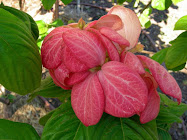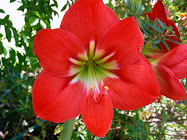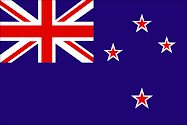Thursday 4 January
The Marae - meeting place
The Marae, sacred open meeting area, generally situated in front of the "whare runanga", communal meeting house, is the area of greatest mana, the place of greatest spirituality ; the place that heightens people's dignity, and the place in which Māori customs are given ultimate expression.
The Marae is the turanga-waewae of the Māori. It is the basis of traditional Māori community life. It is their home. In the Marae official functions take place - celebrations, weddings, christenings, tribal reunions, funerals.
Te Whare Runanga Marae
Te Whare Runanga is the meeting house (marae) at Waitangi, and was built to commemorate the Treaty Centenary Celebrations in 1940. It symbolises Māori involvement in the signing of the Treaty of Waitangi, and its underlying role as the document which brings the people of New Zealand together as one nation and was designed to stand alongside the Treaty House.
Although similar in apperance to other marae around New Zealand, Te Whare Runanga is unique because it was built as a national marae to be shared by all Māori tribes.
As you enter Te Whare Runanga, you will notice a figure at the apex of the gable - this is Kupe, the Pacific explorer. The carvings depict ancestors from many Māori tribes.
Kupe
Kupe sits at the apex, and according to Māori legend he was a great chief of Hawaiki and discovered Aotearoa - Land of the Long White Cloud.
The story of Kupe and the meaning of Aotearoa
Kupe left Hawaiki in his waka the Matawhaorua and travelled in search of the fish of his ancestor, Te-Ika-a-Mäui. He had chased Te Wheke Muturangi (a great octopus) during this search.
While approaching what Kupe believed to be Te-Ika-a-Mäui, the wife of Kupe, Hine Te Aparangi, saw the Southern Alps from a distance and thought they were a cloud and called out, "He ao! He ao!" (A cloud! A cloud!"). As they drew closer she exclaimed "He aotea, he aotearoa!" (A white cloud, a long white cloud!). And so the land was called Aotearoa - 'Land of the long white cloud'.
Kupe confronted and defeated Te Wheke at the entrance to Totaranui (Queen Charlotte Sound) and he travelled around Aotearoa naming many places along the way. After circumnavigating the North and South Islands of Aotearoa, Kupe and his crew returned to Hawaiki with treasures such as preserved moa flesh and pounamu (greenstone).
Entrance
Te Paepae Tapu
This is the threshold, the door sill (of a meeting house door).
Inside Te Whare Runanga
The lighting is fairly subdued so some photos were very dim and have not been included. Tribal art styles are represented in the kowhaiwhai (painted rafter patterns), tukutuku (reed panels) and carvings.
Hand carved totara
The Māori of the South Island contributed this handsome carved totara "Coronation" Chair and a beautiful block of tangi-wai greenstone to rest beneath it.
Wharenui
Inside Te Whare Runanga of Waitangi, the wharenui is the archive of their tribe (iwi) recording priceless history (hitori) through the art of carving, tukutuku panels,and kowhaiwhai (scroll work on rafters).
If you click and enlarge this photo, you can see the detail of the tukutuku and kowhaiwhai.
Tēnā koutou katoa
This is all about New Zealand - Aotearoa - and the time I spent there. Magical times, beautiful scenery, gushing geysers, thermal wonderlands. Hear about Waitangi Day, discover the meaning of the word "Aotearoa", see the Glaciers, read about hangis and Hakas, and visit the beautiful Bay of Islands. So come with me on a journey - a journey to The Land of The Long White Cloud.
Kia ora
CHRISTCHURCH EARTHQUAKE TRIBUTE 2011
Kia ora
Watch The Haka
Subscribe to:
Post Comments (Atom)














No comments:
Post a Comment